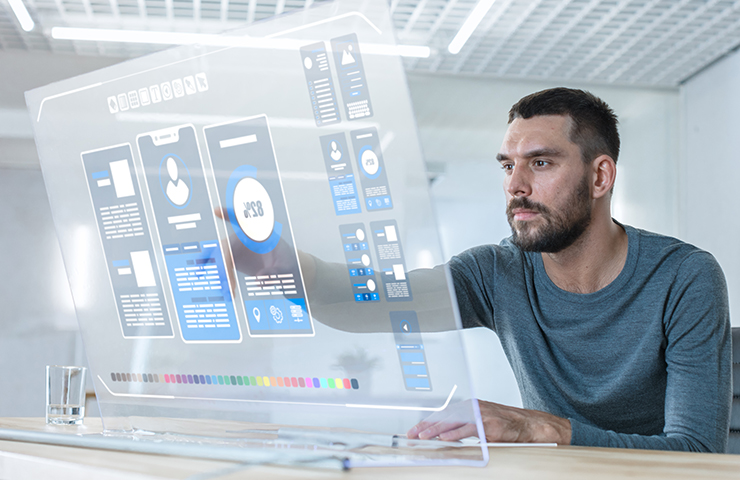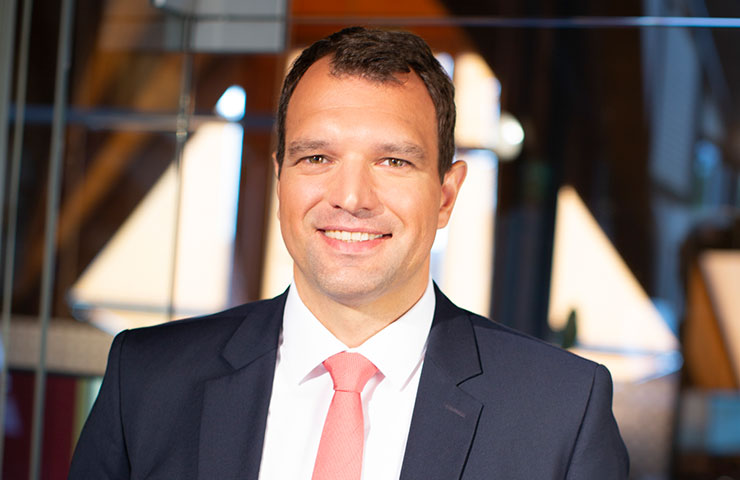When the auditor rings twice

For decades, auditing has followed the same ritual: the auditors pitch their tents close to the accounting department and either they are given entire files or they ask specifically for relevant documents. Although accounting has not remained unaffected by digital transformation - we are seeing more and more documents being stored digitally - the accounting workflow has not changed much. It has a well-rehearsed process that, despite all the progress in terms of efficiency, is still cost-intensive and burdensome for all involved. It is burdensome for employees, because they have to work for the auditors in addition to taking care of their day-to-day tasks. It is burdensome for auditors, because they often work hundreds of miles away from their families during the week - and we do not need to mention the high costs of travel.
Everybody wins with digital accounting
In the course of our digital transformation, we had the opportunity to restructure how we work with auditors. The first step was to change our own way of seeing and thinking and to see auditing as a necessary prerequisite for doing business successfully. The second step was to optimally integrate the auditors into the existing financial and control processes. The COSMO CONSULT Group has granted Wagemann + Partner the mandate to audit the company. Just recently the newspaper Handelsblatt awarded the firm the title of "Best Tax Consultant" for the fourth time in a row and also "Best Auditor" for the first time. In the future, the auditing team will not do the majority of the auditing working from the different COSMO CONSULT Group offices, but working from their company’s own offices or even working from home. For the auditors, this means that their work is more relaxed, their working hours are more humane, and their work-life balance is better, because they do not have to spend weeks at a time in hotels. But we benefit as well, for example, from lower travel costs and the fact that offices for the auditors no longer must be kept permanently available at the various branches.

You can only achieve acceptance by providing an added value
When designing the digital auditing processes, the focus was on two requirements in particular: Increased efficiency and a high degree of user-friendliness. The first thing to be done was to eliminate typical redundancies. The best example is the digital documents that are printed as needed, handed over to the auditor and then rescanned and electronically processed. There was also room for improvement in terms of access to information, because the processes and systems were not ready to provide for mobile access via smartphone and tablet.
The auditing process is highly regulated. New processes and workflows will only be accepted if they are compliant with regulations and provide a tangible added value. To ensure this, the tools must be easy to use and easy to learn. This is the only way for auditors to benefit from improved access to the relevant information.
The way to implement digital auditing
Modern technology has made it possible to reconcile the various requirements. The key element is a multi-cloud platform that includes the various Microsoft applications. These improve collaboration and ensure that access to data and processes is flexible - regardless of when and where access is needed. This has several advantages for auditors:
- All the relevant data is provided via the business intelligence solutions QlikView and Microsoft Power BI. You have the consolidated group results right from the start that can then be broken down across all 31 business units right to the level of individual invoice items and documents.
- The ERP system Microsoft Dynamics NAV can be used directly for auditing procedures related to processes and systems.
- Documents such as invoices that are relevant to entries are available via a document management system run on Microsoft SharePoint.
- With Microsoft Office 365 and its Microsoft Teams, communication is shifted to chat, telephone
In summary

Digital technology has made it possible to eliminate the many redundancies in the auditing process. Today it is leaner and less cost-intensive, which is especially true in terms of travel costs. At the same time, auditors benefit from direct, quick access to relevant information and can get in touch with their contacts in management more easily. Even more important, however, is an ancillary effect of digital transformation: The development of digital structures for reports and the use of modern tools such as management dashboards has increased awareness and understanding of the significant numbers. "With professional controlling we can identify risks and deviations from plans much earlier than before. In addition to this, we were able to implement important routines that provide more transparency and thus lead to better quality management reviews and margin controls," emphasizes Jens Baumgardt, a partner at Wagemann + Partner.
We were able to draw on the existing expertise of our consultants to design and implement the digital auditing process and the development of the multi-cloud platform it required. We are now ready to share the experience and knowledge we gained in this project with the COSMO CONSULT community.
How was your last audit? Did you have the feeling that your processes were too complex and too expensive? Give us a call or send us an e-mail and we can discuss how to optimize the audit process for you.